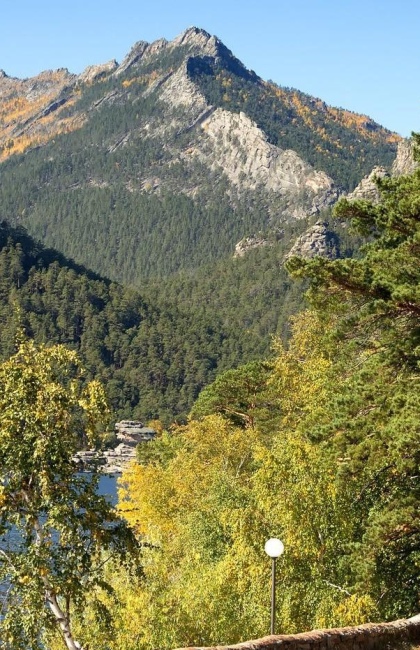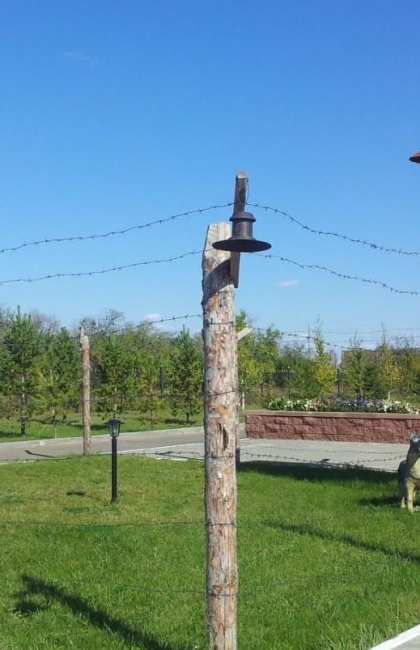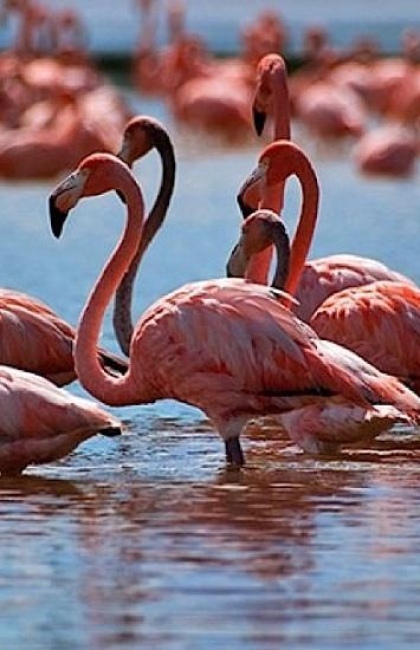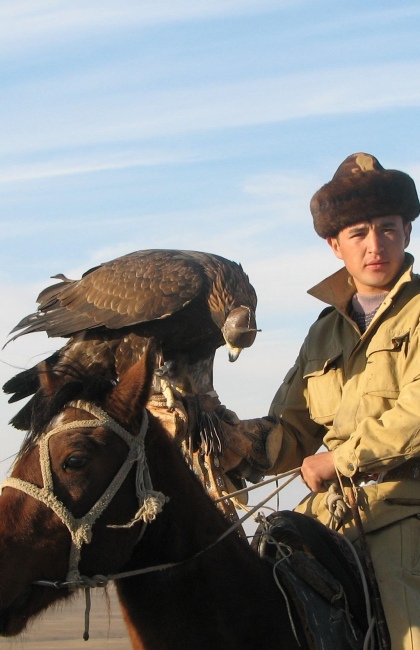A Guide to Must-Visit Attractions near Astana
At first glance, Central Kazakhstan might seem like a land of nothing but vast, flat grasslands stretching endlessly to the horizon. But look a little closer, and the landscape reveals its charm. Among these open spaces lie hidden gems: lakes cradled by rocky cliffs and pine forests, where nature shows off its softer side. Beyond nature, the region also holds deep historical significance. In this article we’ll focus on the wonders of the Akmola region – the area that surrounds Astana. For Astana’s attractions, check out our separate guide. Ready to explore? Let’s go.
Burabay: The Emerald Heart of the Kazakh Steppe
The most beloved getaway from Astana is Burabay, also known as Borovoe. Located about 260 km (160 mi) north of the capital, this forested oasis is often called the "Pearl of Kazakhstani Tourism." Picture crystal-clear lakes, pine trees clinging to rocky slopes, and air so fresh it feels like therapy. Burabay is where city dwellers come to wander forest trails, hunt for mushrooms, or simply hit pause and breathe.
At the heart of this resort area lies the village of Burabay (Borovoe), sitting near the lake that shares its name. While the village mainly serves as a base for exploration, it has a few surprises of its own. Visitors can explore the Burabay Museum of Local History and Nature, and the Ablai Khan Museum, or enjoy attractions like the Upside-Down House and a Ferris wheel. Don’t miss the Grove of Dancing Birches – a small forest where the trees twist and curve in ways that really do look like they’re mid-dance.
The lake itself is a major draw. Lake Borovoe is the most visited in the region, both for its beauty and for how close it is to the village. The lake’s shoreline offers both free and private beaches, many with loungers, cafes, and activities. You’ll find water slides, swimming pools, catamaran and boat rentals, and even the option to fly over the lake with a parachute.
On the northwestern shore of Lake Borovoe lies one of the area’s most intriguing natural landmarks – Jumbaktas, or Riddle Rock. Depending on your viewpoint, the rock seems to transform – now resembling a young woman, now an old man. You can approach it by boat or catamaran, but climbing is discouraged due to safety concerns.
Nearby stands another iconic formation – the Okzhetpes Rock. Its name means “Unreachable by Arrow,” and it certainly lives up to it. While the view from the top is tempting, the ascent is suited only for experienced climbers with proper gear. Luckily, it’s just as breathtaking from below, especially during golden hour when the sun lights up its rugged face.

For those craving panoramic views of the lake, Mount Bolektau is your go-to. It’s only 147 meters (482 ft) tall, but don’t let the modest height fool you. The climb is steep enough to make your legs work. No special training needed, just good shoes and a spirit of adventure.
And if you're drawn to legends, don’t miss the Kenesary Khan Cave. Kenesary was the 19th-century leader of Kazakhstan’s national liberation movement against the Russian Empire. Legend has it that he often hunted in these forests. When nightfall caught him far from camp, Kenesary would take shelter in this very cave.
Not far from Lake Borovoe, lies the Glade of Abylai Khan, a significant site linked to one of Kazakhstan’s most revered rulers. Abylai Khan led the Kazakh Khanate from 1771 to 1781 and fought against the Dzungar invaders. He was elected khan right on this very clearing. Today, a large stele stands there in his honor.
The glade rests at the foot of Mount Kokshetau, the highest peak in the region standing at 947 meters (3107 ft). The climb isn’t for the faint of heart. It takes about two hours up and another two to descend, so you’ll need decent fitness, proper shoes, and a bit of determination. But the sweeping views at the top? Absolutely worth it.
While you’re exploring the area, take a detour to the Imanaevsky Spring, not far from the glade. It tumbles down a gentle three-tiered waterfall, only about 2 meters (6.6 ft) high but charming in its serenity. There’s a forest path nearby, a bike trail, and even a spot designed for photo shoots.
Looking for more water adventures? Head to Lake Shuchye, a popular destination for fishing and boating. It is also home to one of the most luxurious stays in the region – the Rixos Borovoe Hotel. On its first floor, you’ll find the CashVille Casino, a sleek spot for those feeling lucky. Fun fact: Borovoe is one of only two locations in Kazakhstan where casinos and slot halls are legal. The other one is Konayev, by Lake Kapchagay.
Just north of Lake Borovoe lies Lake Bolshoye Chebachye, the largest lake in the resort area and a true favorite among local fishermen. Its waters are home to a variety of fish including crucian carp, perch, whitefish, and even crayfish. In recent years, the shoreline has been spruced up: a paid beach with sun loungers, toilets, and trash bins was added. Despite these upgrades, Bolshoye Chebachye remains much quieter than Borovoe, offering a more peaceful alternative for those looking to escape the crowds. One of the lake’s highlights is the Akbura recreation center, where visitors can snap a photo with the Guardian of the Forest, a stone sculpture that’s become something of a social media star.
Just a short distance away, Lake Maloye Chebachye offers even more solitude. There are barely any hotels or campsites here, making it a favorite for lovers of wild nature and off-the-grid adventures. It’s an ideal spot for camping, hiking, and gathering around a fire under the stars.

The area has several smaller lakes worth checking out. Lake Tekekol sees very few tourists, and guesthouse prices here are noticeably lower. It’s a magnet for fans of tent camping.
Then there’s Lake Katarkol, a lesser-known beauty surrounded by birch and pine forests. While swimming isn’t allowed, the sandy shore is perfect for sunbathing, and anglers will feel right at home: roach, silver carp, bream, and perch can all be caught here.
One of the most intriguing attractions in the area is the stone fortress of Taskamal. Despite its name, this isn’t a man-made fortress, but a wall of massive stones stacked in a way that raises more questions than answers. No one knows exactly why or how this stone formation came to be, which only adds to its mystique.
Tucked far from the usual tourist trails stands Mount Zheke Batyr, the second-highest peak in the area after Mount Kokshetau. Reaching the summit is no walk in the park – the trail is steep and treacherous in places. You’ll also have to hike all the way to the base, as dense forest prevents vehicles from getting close.
Another striking natural formation is the Three Sisters Rock, a cascade of three rock towers located northeast of Abylai Khan Glade. The Younger Sister is the most accessible, while the Middle Sister is a real challenge suitable only for experienced climbers with proper gear. The Elder Sister can be climbed from the north side, but it’s still a tough ascent, especially for those without hiking experience or solid fitness.
Looking for something more cultural? Head to the Jailau Ethnic Village, where you can immerse yourself in Kazakh traditions. Spend the night in a yurt, try your hand at traditional crafts, join in national games, practice archery, and enjoy local cuisine. And if you're visiting in winter, Burabay Land Hotel turns into a fairytale destination with the opening of Father Frost’s (Russian Santa Claus) residence.
For history buffs, the Botai-Burabay Museum is a must-see. It tells the story of the ancient Botai culture, which thrived here between 3700 and 3100 BC. Archaeologists believe the Botai people were among the first to domesticate the horse. The museum features reconstructions of ancient dwellings, original tools, and lifelike wax figures of the Botai people.
And a quick practical note: entry to the Borovoe resort area is not free. As of April 2025, the fee is 369 tenge ($0.71) per person per day for those entering on foot, and 1108 tenge ($2.12) per person per day if entering by car.
Zerenda: Serenity Off the Beaten Path
West of Borovoe lies a quieter gem – Zerenda. Unlike its more famous neighbor, Zerenda hasn’t been overtaken by crowds, traffic, or queues. And that’s precisely its charm. What it lacks in flashy infrastructure, it makes up for in peace, affordability, and untouched nature.
The heart of the resort is Lake Zerenda, nestled among pine forests and gentle hills. It's part of Kokshetau National Park and a real haven for nature lovers. The water here is clear, warming up to a pleasant +25°C (77°F) in summer. The sandy bottom and soft, sloping shores make it perfect for lazy swims and sunbathing. But it’s not just swimmers who love it. Local anglers know that the lake is home to ruff, perch, chub, peled, and vendace. .jpg)
Stretching alongside the lake are the Zerenda Mountains – modest in size but rich in charm. They’re ideal for casual hikes, with scenic trails and peaceful viewpoints. Don’t miss Smolnaya Hill and the Giant Mushroom Rock. The former is a hill that offers great views of the surroundings, while the latter is a stone formation that looks like a mushroom, hence the name.
Craving a bit of mystery? Venture out to the Dragon Cave. Rumor has it, the cave stretches 270 meters (885 feet) into the earth. Realistically, no one gets that far. The passage narrows quickly and the entrance itself is tricky to find. Ask locals for directions ahead of time. And be prepared: only a sturdy SUV will handle the wild road leading there. But the rugged journey is part of the adventure and the untouched nature surrounding the cave makes it worth the effort.
Another one of Zerenda’s hidden gems is the Ulguli Waterfall. In spring, when the snow begins to melt, a powerful stream crashes down from a height of 10 meters (33 feet). By late summer, the waterfall quiets down, shrinking to a gentle trickle.
If you're in the mood for something unexpected, drop by the Butterfly Museum. While the butterflies here are dried, the sheer variety is dazzling: over 2,000 tropical species from around the globe.
Other Noteworthy Places: From Tragedy to Triumph
Just an hour’s drive from Astana lies one of the most poignant historical sites in Kazakhstan – the ALZHIR Memorial Complex, once the Soviet-era labor camp for women. Those women were imprisoned not for their own actions but because they were wives or relatives of men labeled as "enemies of the people" during Stalin's purges. In 2007, a museum and memorial were built on the site of the former camp to honor their stories. Visitors can explore the preserved grounds with watchtowers, barbed wire fences, and adobe barracks, walk through exhibitions, and see installations and figures that bring the past to life. It’s not just a museum, but a mirror of a brutal history that should never be forgotten.
Another place of deep cultural and national significance is the Mausoleum of Kabanbai Batyr, one of Kazakhstan’s greatest heroes. A trusted commander under Abylai Khan, Kabanbai Batyr led forces that helped defend the Kazakh people from the Dzungar invasion. His mausoleum stands as a symbol of strength, unity, and the enduring spirit of resistance.
If your heart yearns for untouched wilderness, set your sights on the Korgaljyn Nature Reserve – a UNESCO World Heritage. This vast wetland ecosystem is home to rare bird species, including pink flamingos. From late April to October, these elegant birds settle on the reserve’s lakes – Tengiz, Small Tengiz, Sultankeldy, and others. Their presence attracts thousands of birdwatchers and nature photographers each year.

While we’re talking about lakes, it’s impossible to skip Lake Kobeituz – the famous “Instagram lake.” A few years ago, it went viral for its surreal pink hue, caused by Dunaliella salina algae. But don’t count on seeing it pink every summer: the color only appears when conditions are just right, making each appearance a fleeting natural miracle.
Heading south from Kobeituz, you’ll find yourself in the Yereymentau Mountains. These mountains are more like hills but they still hold charm. Think silence, crisp air, rare flora and fauna, and mysterious archaeological treasures hidden among the hills.
The Falcon Mountains, which are a part of the Yereymentau mountain system, are especially loved by Astana locals for quick weekend escapes. Its most photographed spot is the “Falcon’s Beak” rock ledge. In photos taken from a certain angle, it looks like you’re standing on a thin rock high above a deep abyss. But in reality, the ledge isn’t very high, and there’s solid ground just below it.
One of the best corners of the park is the Belodymov’s Cabin – a peaceful retreat where you can unplug from the world. Nearby, a large enclosure shelters wapitis and bison, giving visitors a rare chance to observe these animals. Nearby is Lake Azhbay, a paradise for birdwatchers with dozens of species nesting along its shores.
History buffs will want to visit the Kumai Archaeological Site, which includes early Iron Age burial mounds, Bronze Age and medieval graves, and remnants of late medieval settlements.
It's worth noting that Yereymentau Mountains belong to the Buiratau National Park, and to preserve its fragile ecosystems, visitors can only explore along official routes approved by the park administration. 
Cities with a Story: From Windmills to Secrets of the Atomic Age
If you're exploring the Akmola region, make sure to stop by Kokshetau – its administrative center. Take a stroll along Lake Kopa, snap a photo with the backdrop of wind turbines spinning on the hills, or visit the Akmola Regional History Museum. Nature lovers will appreciate that the Kokshetau National Park is just a stone’s throw from the town.
Looking for a quick nature escape from Astana but don’t have time for Burabay? Try Akkol, just 100 km (62 mi) away on the way to Borovoe. Surrounded by pine forests, the area is rich in berries, mushrooms, and medicinal herbs. There are several guest houses here, and the trip from Astana takes only about an hour and a half.
Then there’s Stepnogorsk, a town with a darker, more secretive past. Once a Soviet closed town, it was involved in the development of biological weapons and uranium processing. The abandoned mines, ruins of classified buildings, and its intriguing history attract fans of dark tourism. The local museum sheds light on the city’s shadowy Soviet legacy.
This brings us to the end of our journey through the Akmola region. This is a place where every trail tells a story, every quiet lake and distant hill offers a moment of reflection. Whether you’re searching for peace, inspiration, or adrenaline, this land responds with its own kind of magic.




